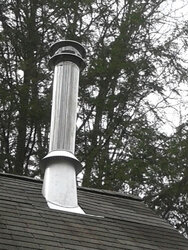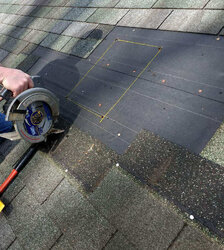I'm looking for some advise for the adhesive typically recommended for the chimney roof flashing and storm collar. Something I could pick up at the hardware store along with some other bits and pieces for my install. I was thinking of using a Black Jack type rubber cement, however I already have a full tube of silicone in the closet.
I also noticed on the instructions not to nail the down the area of roof flashing that is exposed. To only nail in the area inserted under the shingles. I've seen installs where there are nails on the exposed portion of the roof flashing. I would think we cant just rely on the adhesive to keep the roof flashing from uplifting in a strong wind. Maybe I'm wrong?
I did notice the adjustable roof bracket calls for lag screws into the rafter. Which is creating a larger hole than a couple of roofing nails? Curious as to why we cant set a couple nails into the flashing.
I also noticed on the instructions not to nail the down the area of roof flashing that is exposed. To only nail in the area inserted under the shingles. I've seen installs where there are nails on the exposed portion of the roof flashing. I would think we cant just rely on the adhesive to keep the roof flashing from uplifting in a strong wind. Maybe I'm wrong?
I did notice the adjustable roof bracket calls for lag screws into the rafter. Which is creating a larger hole than a couple of roofing nails? Curious as to why we cant set a couple nails into the flashing.
Last edited:



